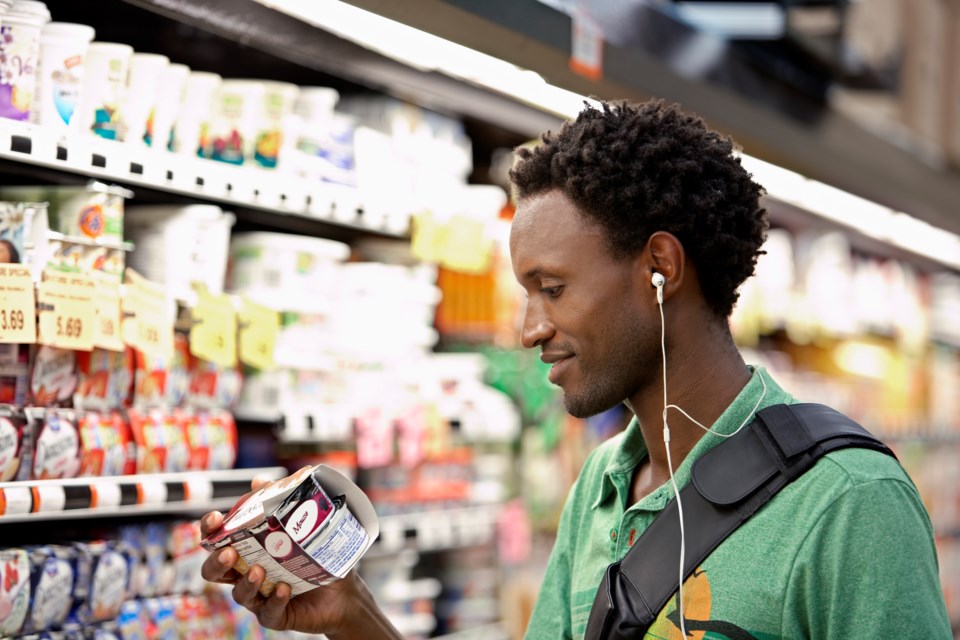In this modern world full of food options like vegan, gluten-free, free-range and all-natural, choosing what to eat has never been more confusing. The more information that gets put out there, the less we know what to do with it all. Should I be eating Paleo like a caveman? Is all-organic the way to go? What the hell is a GMO and should I be juicing everything and abstaining from solid foods? Is drinking my own urine really a good idea? (It’s not.)
Our grandparents certainly did not have to worry about this, food was food and it came from a farm. Like, a real farm with rolling hills and meadows and stuff, not a factory that very closely resembles a torture chamber where food goes to die.
Understanding food labels can help you make better food choices, not only for your health, but for the environment as well. But are health labels just all hype? An eager marketing scheme to get you to jump on the healthy bandwagon?
I really wish the answer was no, but for some companies it’s a heck yes. This is why it is very important to educate yourself on how to read past the bullcrap and get some healthy food to your plate.
For most of us, the words “natural”, “organic” or “real fruit” make us feel better about what we’re eating, even if we pay an arm and a leg for it. Unfortunately, you can’t put your trust in what the packaging says: you are being misled and by a procedure called "greenwashing". Labels that say "all-natural" or "organic ingredients" give you a false promise of health, when in reality, companies are just trying to make a buck off your healthy living regime. There is nothing we can really do about it except educate ourselves and read more.
Here are some of the popular words that you will see to make you believe you are making the better health choice;
Fat free
If it’s fat free, chances are that it’s loaded with sugar. Don't mistake this label for the pinnacle of health, when something is taken out of a product it's usually filled with things you don’t want, which in most cases is sugar and preservatives that don’t do anything good for your health.
Gluten free
Be it health or fad, if you choose to go gluten-free, don’t assume that this label on the box means it’s good for you. A lot of gluten-free products are a bunch of junk, and getting gluten-free chips or cheezy poofs doesn't make them the healthier option. There are lots of things that are healthy and gluten-free, how about veggies and fruits? They don’t have gluten and they are delicious, and healthy.
Natural flavours vs artificial
What's the difference? Hardly anything, apparently. In an interview with CNN, David Andrews, senior scientist at the Environmental Working Group, explains that, “the largest difference is that natural flavors are coming from natural sources. The original ingredient is found in nature and then purified and extracted and added back into the food.” Wait, do you mean that “natural” is actually “artificial”? Andrews states, “the mixture will often have some solvent and preservatives — and that makes up 80 to 90 per cent of the volume [of the flavoring]. In the end product, it's a small amount, but it still has artificial ingredients," So yes, basically natural and artificial are one in the same.
Organic
There is a difference between a product having the USDA certified organic seal and a product “made with organic ingredients”. The former can have as little as 70 per cent organic content and still meet the government standard to be labeled organic.
Recipe: Baked potato chips
Ingredients
• 2 pounds russet potatoes, cut into 1/4-inch-thick slices
• 3 tbsp olive oil
• Himalayan salt
• Pinch of cayenne or chili powder
• Freshly ground pepper
Directions
1. Preheat oven to 400 F.
2. Layer baking sheet with parchment paper; set aside. Put potatoes, oil, 1 tbsp salt, and the cayenne/chili in a large bowl; season with pepper. Toss to combine.
3. Arrange potato slices on prepared baking sheets, spacing them 1/4 inch apart. Bake, rotating sheets halfway through, until potatoes are crisp and golden brown, about 30 minutes.
4. Spread out potatoes on parchment paper; let dry for five minutes.



